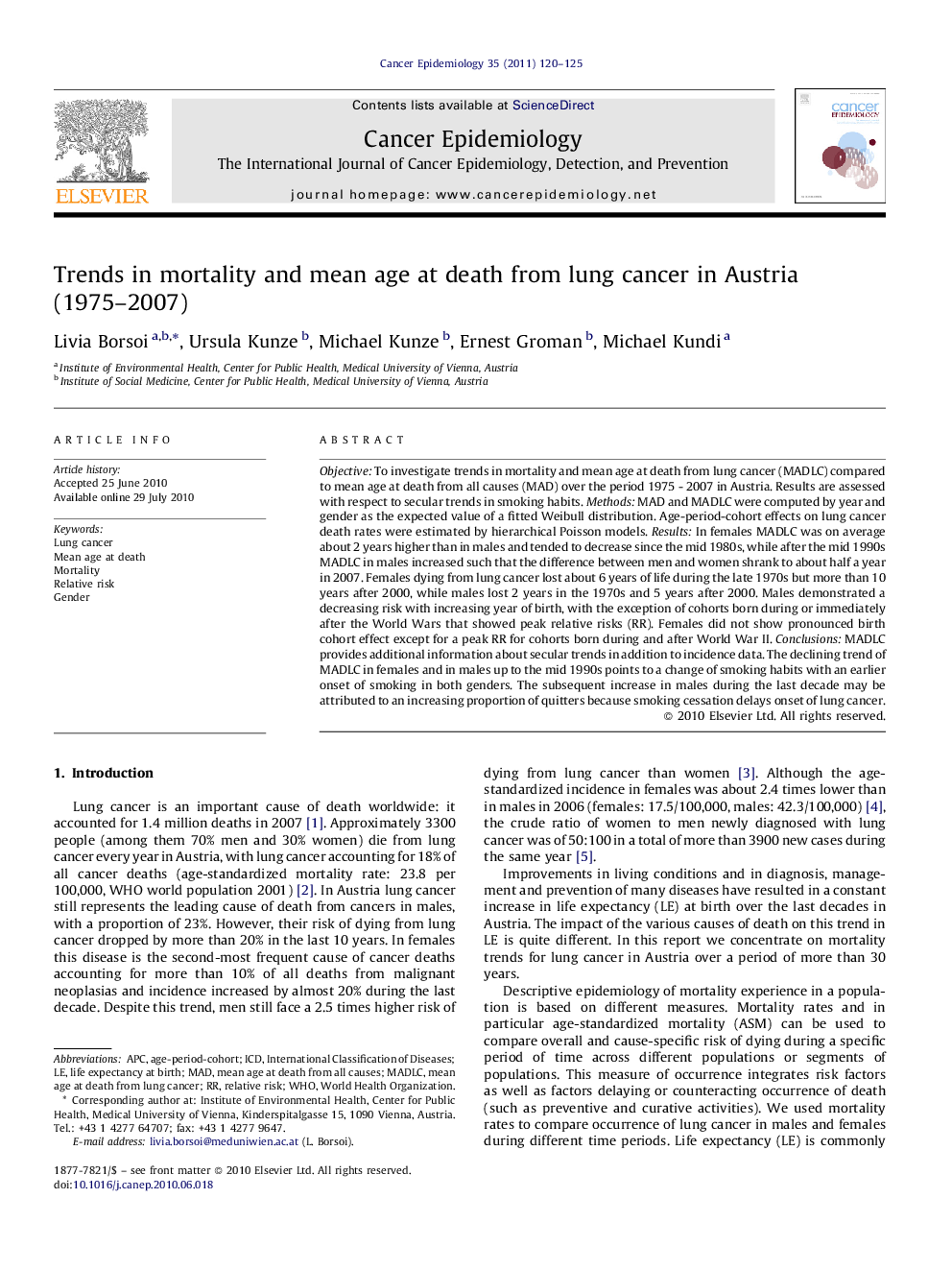| Article ID | Journal | Published Year | Pages | File Type |
|---|---|---|---|---|
| 2109264 | Cancer Epidemiology | 2011 | 6 Pages |
Objective: To investigate trends in mortality and mean age at death from lung cancer (MADLC) compared to mean age at death from all causes (MAD) over the period 1975 - 2007 in Austria. Results are assessed with respect to secular trends in smoking habits. Methods: MAD and MADLC were computed by year and gender as the expected value of a fitted Weibull distribution. Age-period-cohort effects on lung cancer death rates were estimated by hierarchical Poisson models. Results: In females MADLC was on average about 2 years higher than in males and tended to decrease since the mid 1980s, while after the mid 1990s MADLC in males increased such that the difference between men and women shrank to about half a year in 2007. Females dying from lung cancer lost about 6 years of life during the late 1970s but more than 10 years after 2000, while males lost 2 years in the 1970s and 5 years after 2000. Males demonstrated a decreasing risk with increasing year of birth, with the exception of cohorts born during or immediately after the World Wars that showed peak relative risks (RR). Females did not show pronounced birth cohort effect except for a peak RR for cohorts born during and after World War II. Conclusions: MADLC provides additional information about secular trends in addition to incidence data. The declining trend of MADLC in females and in males up to the mid 1990s points to a change of smoking habits with an earlier onset of smoking in both genders. The subsequent increase in males during the last decade may be attributed to an increasing proportion of quitters because smoking cessation delays onset of lung cancer.
